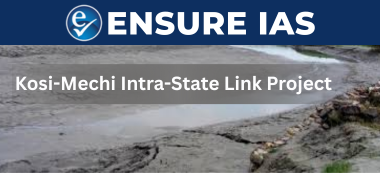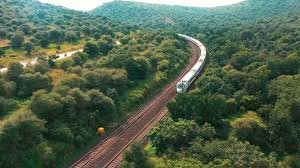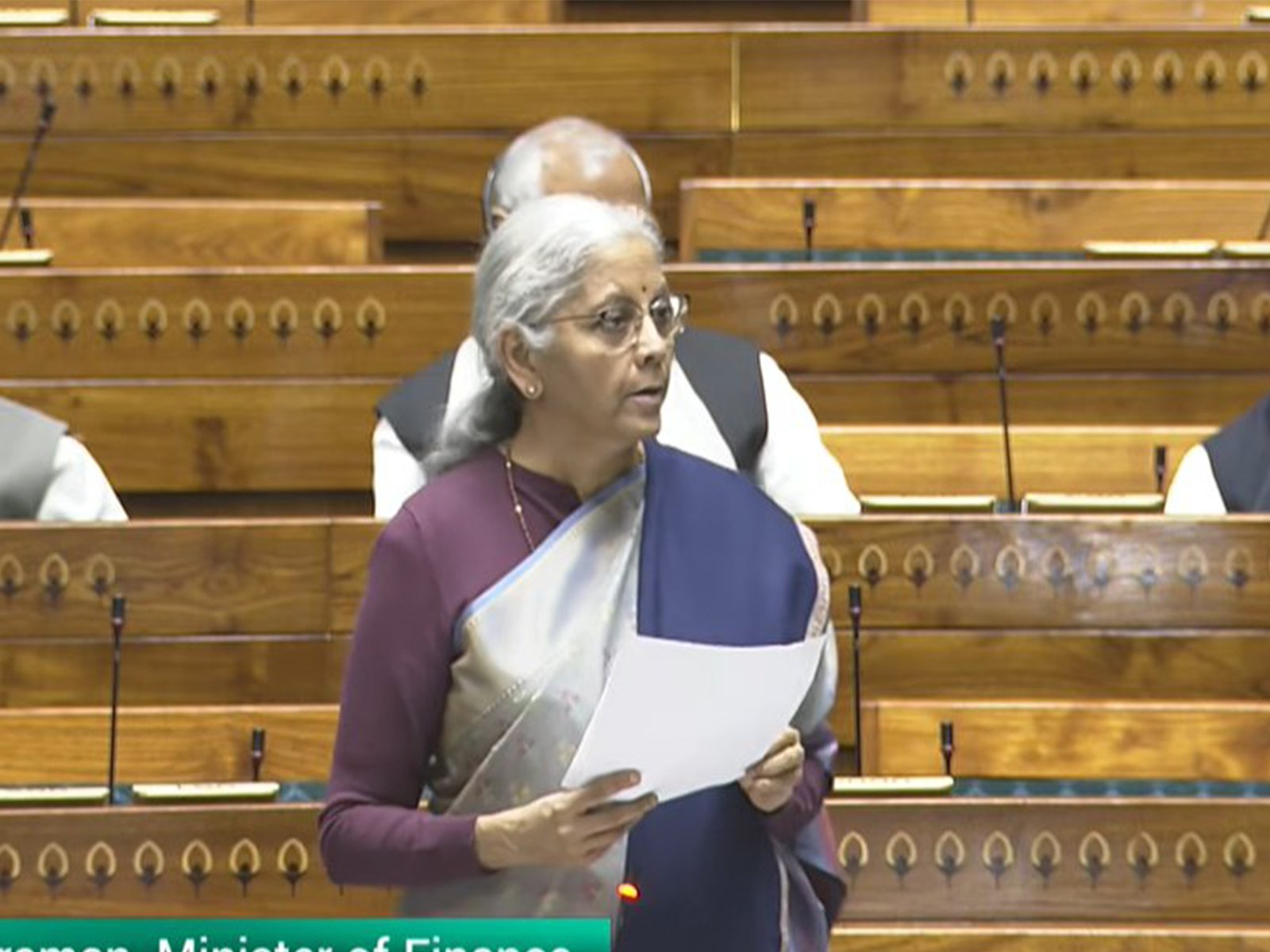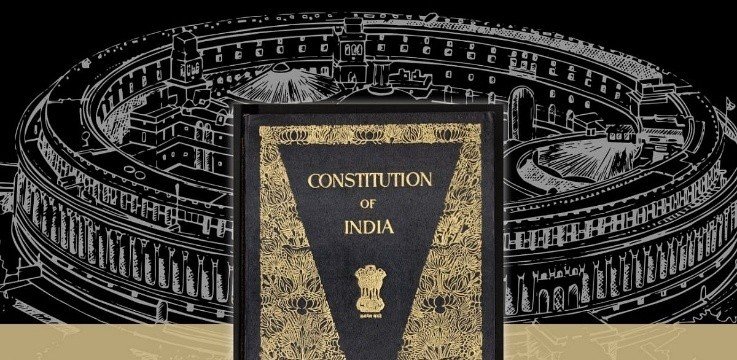Introduction
- On March 28, 2025, the Cabinet Committee on Economic Affairs (CCEA) approved the inclusion of the Kosi-Mechi Intra-State Link Project under the PMKSY-AIBP.
- The project is estimated to cost ₹6,282.32 crore, with ₹3,652.56 crore provided as central assistance. It is scheduled for completion by March 2029
What is the Kosi–Mechi Link Project and How Will It Work?
- Project Objective: The Kosi River, known for frequent floods, will be connected to the Mechi River, a tributary of the Mahananda, which faces water scarcity in districts like Supaul, Araria, Purnea, and Kishanganj.
- Canal Infrastructure: The project uses the Eastern Kosi Main Canal (EKMC) by remodelling it up to 41.30 km and extending it to 117.50 km to reach the Mechi River.
- Engineering Components: The extension involves new canal construction with supporting structures such as canal syphons, aqueducts, road bridges, and regulators to manage water flow effectively.
Why is the Project Significant for Bihar and India?
- Expanded Irrigation in Seemanchal Region
The project will provide assured irrigation to 2.10 lakh hectares of farmland in Araria, Purnea, Kishanganj, and Katihar districts during the Kharif season, improving food security in water-stressed areas. - Restoration of Existing Command Area
It will restore irrigation supply to 1.57 lakh hectares under the Eastern Kosi Main Canal (EKMC), which had seen reduced flows in recent years. - Flood Moderation Potential
By diverting 2,050 million cubic meters of surplus water from the flood-prone Kosi River, the project may reduce flood pressure on embankment zones and assist in groundwater recharge. - Strategic National Integration
The project is part of India’s National Perspective Plan (NPP) and the 10th inclusion under PMKSY-AIBP, reinforcing national goals of inter-basin water transfer and agriculture resilience. - Intra-State Model for Water Governance
As one of the first major intra-state river linking projects, Kosi–Mechi offers a replicable model for other states to optimise internal river systems without interstate disputes. - Ecological and Livelihood Support
Improved irrigation will enhance cropping intensity, reduce seasonal migration, and stabilise rural incomes, particularly in districts with recurring drought-flood cycles.
Challenges and Concerns
- Limited Role in Flood Control
While the project is situated in a flood-prone region, its primary focus remains irrigation. The proposed diversion of 5,247 cusecs is marginal compared to the Kosi barrage’s capacity of 9 lakh cusecs, casting doubts on its flood mitigation potential.
- Local Opposition and Erosion Risks
Residents in Supaul and Araria districts have raised concerns about land erosion, displacement, and inadequate resettlement provisions. Annual erosion between embankments continues to displace families without formal recognition. - Environmental Concerns
The EIA report does not comprehensively assess risks such as siltation, aquatic disruption, and floodplain degradation. Experts argue that regional flood behavior and cumulative ecological impacts were not adequately studied. - Technical and Water Availability Challenges
The project depends on surplus water from Hanuman Nagar Barrage, which may vary due to seasonal or upstream factors. This raises concerns about the project’s reliability in non-monsoon periods or under climate variability. - Financial and Timeline Risks
With a sanctioned cost of ₹6,282.32 crore and a completion target of March 2029, there are risks of cost overruns and delays, as observed in past AIBP-linked projects.
Way Forward: Strengthening the Impact and Sustainability of the Project
- Integrate Flood Control with Irrigation Goals
- Strengthen embankments and erosion-prone zones in vulnerable districts like Supaul and Araria using geo-textile reinforcement and afforestation.
- Include floodplain zoning and drainage planning to avoid annual flood damage (Kosi floodplain shifts by ~112 km in 200 years).
- Ensure Fair and Transparent Rehabilitation
- Implement a robust land acquisition and compensation process, with clear guidelines and grievance redressal
- Provide housing and livelihood restoration for displaced families under national resettlement norms.
- Strengthen Real-Time Technical Monitoring
- Install water flow sensors at Hanuman Nagar Barrage to ensure timely diversion of surplus flows (project aims to divert only 5,247 cusecs against barrage capacity of 9 lakh cusecs ).
- Use seasonal flow forecasting models to adapt diversion schedules dynamically.
- Enhance Environmental and Ecological Oversight
- Conduct a revised Environmental Impact Assessment (EIA) considering floodplain ecosystems and siltation impact.
- Ensure regular monitoring of water quality and aquatic ecology during and post-project phases
- Improve Public Communication and Trust
- Regular public consultations and updates via panchayat bodies and district-level awareness drives.
- Simplify technical information through brochures and digital campaigns, particularly for affected gram sabhas
- Implement Phased and Review-Based Execution
- Divide implementation into clear, time-bound milestones with review checkpoints (e.g., 25% EKMC extension by 2026).
- Build flexibility into design for course correction based on local feedback, ecological findings, or monsoon behaviour.
Conclusion
The Kosi–Mechi Link Project represents a strategic step in integrated water management. By linking rivers within Bihar, it addresses regional irrigation needs while aligning with national goals under PMKSY-AIBP. Its success will depend on adaptive planning, environmental safeguards, and inclusive execution. If implemented effectively, it can serve as a replicable model for intra-state river linking across India.
Appendix : About Kosi and Mechi RiversKosi River – “Sorrow of Bihar”
Mechi River – Tributary of Mahananda
|
Appendix : Key Institutions and Schemes Involved1. Pradhan Mantri Krishi Sinchai Yojana – Accelerated Irrigation Benefits Programme (PMKSY–AIBP)
2. National Water Development Agency (NWDA)
3. Ministry of Jal Shakti (MoJS)
4. Central Water Commission (CWC)
5. National Perspective Plan (NPP)
|
Appendix : Other Major River Linking Projects in India1. Ken–Betwa Link Project (Madhya Pradesh–Uttar Pradesh)
2. Par–Tapi–Narmada Link (Gujarat & Maharashtra)
3. Damanganga–Pinjal & Par–Tapi–Narmada Links (Western India)
4. Mahanadi–Godavari Link (Proposed)
5. Intra-State Links
|





